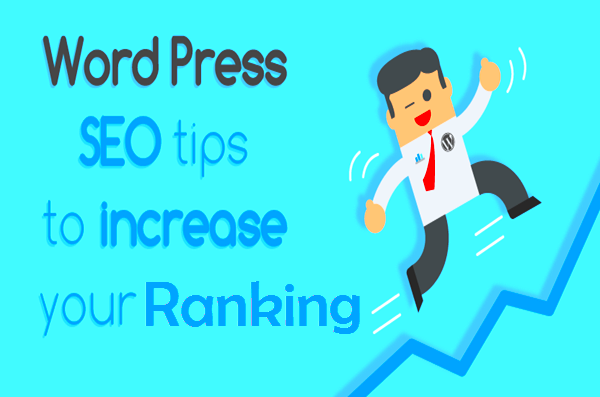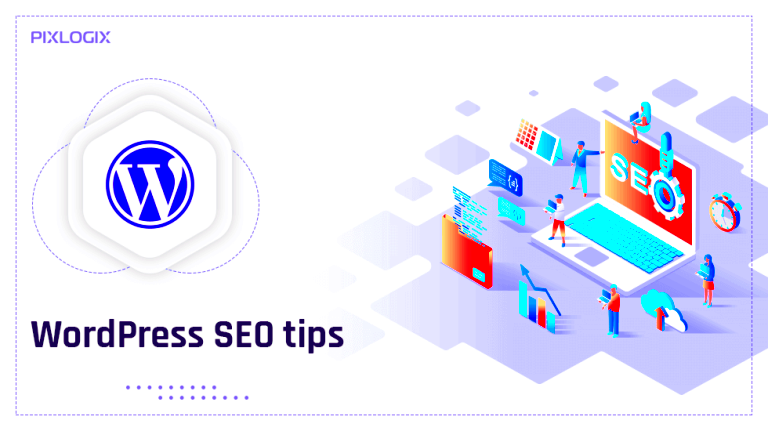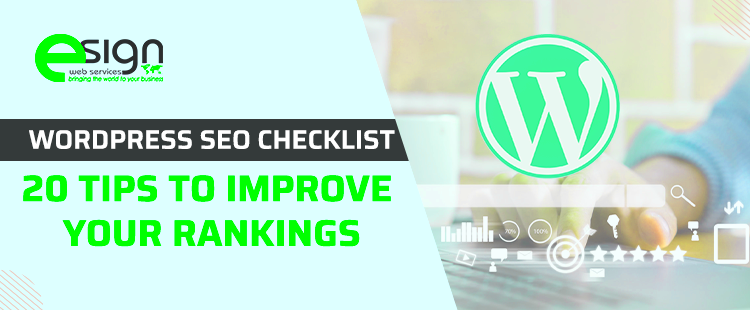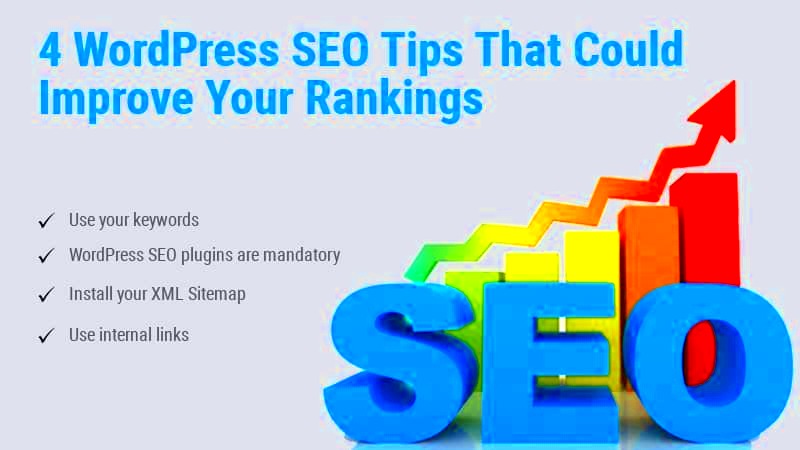Hey there! If you’re diving into the blogging world with WordPress, understanding SEO is crucial for getting your content noticed. WordPress SEO involves optimizing your site to rank higher in search engine results, making it easier for potential readers to find you. In this article, we’ll explore simple yet effective tips that can boost your blog’s visibility and ultimately help you reach a broader audience. So, let’s get started!
Understanding the Importance of SEO for Blogging

Now that we’ve got the introduction out of the way, let’s delve into why SEO is an absolute game-changer for bloggers. You see, in the vast sea of the internet, having a blog is like setting up a tiny boat. If you don’t optimize it, chances are it’ll sit unnoticed while others sail by! Here are some key reasons to embrace SEO:
- Increased Visibility: Good SEO practices help your blog appear in search results when people are looking for topics you cover. More visibility means more clicks!
- Higher Traffic: When your site ranks well, you’re likely to attract more visitors. Increased organic traffic can translate to expanded reach and influence.
- Credibility and Trust: Users tend to trust sites that appear on the first page of search results. SEO contributes to your credibility as a reliable source of information.
- Better User Experience: Many SEO techniques, such as improving page speed and mobile responsiveness, also enhance the user experience. A well-structured site keeps visitors engaged longer.
- Cost-Effective Marketing: Compared to paid advertising, SEO is one of the most cost-effective online marketing strategies. It may take time, but the results can be worth it.
Understanding SEO isn’t just about the technical stuff; it’s really about connecting with your audience and providing content they find valuable. So, embracing SEO is like setting up a strong foundation for your blogging journey.
Keyword Research: Finding the Right Keywords

When it comes to boosting your blog rankings, keyword research is like treasure hunting for words! It’s all about finding the right keywords that your audience is searching for, so you can tailor your content accordingly. But how do you actually go about it? Let’s break it down.
First off, brainstorming is a great starting point. Think about the topics your audience is interested in. What questions do they frequently ask? What problems are they trying to solve? Jot down a list of potential keywords related to these topics. Once you have your initial list, it’s time to dive deeper using various tools. Here are a few popular options:
- Google Keyword Planner: A classic tool to find keywords along with their search volume.
- Ahrefs: Perfect for competitor analysis and uncovering keywords they’re ranking for.
- Ubersuggest: A user-friendly tool that provides keyword suggestions and data.
As you’re choosing keywords, look for those that have a decent search volume but aren’t overly competitive. This sweet spot means you have a better chance of ranking higher. Tools often provide a metric called Keyword Difficulty (KD), which can help you gauge at what level your competition lies.
Lastly, don’t forget to consider long-tail keywords. These are phrases that are typically longer and more specific. Yes, they might have lower search volumes, but they often lead to higher conversion rates because they indicate a more specific search intent.
In summary, keyword research is all about understanding what your audience is searching for and making informed decisions based on data. The right keywords can significantly enhance your content’s visibility, so take the time to do this homework!
Optimizing Your Blog Posts for SEO

Once you’ve nailed down your keywords, it’s time to put them to work! Optimizing your blog posts for SEO is crucial to ensure that both search engines and readers can find and engage with your content. Let’s delve into some practical and effective strategies.
First up, title tags! Make sure to include your primary keyword at the beginning of your title. A well-crafted title not only helps with SEO but also encourages clicks. For example, instead of a bland title like “My Tips on Cooking,” you might say, “Essential Cooking Tips for Beginners: Mastering the Kitchen.”
Next, don’t skip on the meta description. This brief blurb gives readers a sneak peek into what your blog post is about. Including your main keyword and making the description enticing are key factors that can increase your click-through rates (CTR).
Another crucial element is the use of headings and subheadings. These not only organize your content but also help search engines understand its structure. Make sure to incorporate your keywords naturally in at least one of the subheadings.
Furthermore, check your image optimization. Always include alt text for images and consider using keywords when relevant. This step can lead to traffic from image search results as well!
Lastly, focus on building internal and external links. Linking to other relevant articles on your blog encourages visitors to explore more of your content while also enhancing your SEO. Similarly, linking to reputable external sources adds credibility to your blog.
In essence, optimizing your blog posts for SEO is about blending creative content with strategic keyword usage. Follow these guidelines, and you’ll not only offer value to your readers but also improve your chances of ranking higher in search engines!
5. Utilizing SEO Plugins for WordPress
When it comes to optimizing your WordPress blog for search engines, SEO plugins are your best friends! These handy tools can significantly simplify the process of enhancing your website’s visibility. So, let’s dive into how you can make the most of them.
First up, choose the right SEO plugin. There are several options available, but here are a few favorites:
- Yoast SEO: This plugin offers a comprehensive solution, allowing you to optimize both your content and technical SEO.
- All in One SEO Pack: Great for beginners, this plugin provides all the basic tools you’ll need to get started.
- Rank Math: A newer contender that combines features from both Yoast and All in One, making SEO easier than ever!
Once you’ve installed your chosen plugin, it’s time to configure its settings. Here are some quick tips to help you set up:
- Focus Keywords: Identify your primary keywords and set them in your posts. The plugin will help you optimize accordingly.
- Meta Descriptions: Craft engaging meta descriptions for your posts. This is your chance to attract clicks from search engines!
- XML Sitemaps: Enable this feature to help search engines crawl your site more efficiently.
Finally, don’t forget to keep your plugins updated. Regular updates ensure you benefit from the latest SEO features and security measures, keeping your site running smoothly while climbing those search rankings!
6. Improving Your Blog’s Loading Speed
In today’s fast-paced digital world, nobody likes slow-loading websites! Not only does a laggy blog frustrate your visitors, but it can also negatively impact your SEO performance. So, let’s explore some effective strategies to boost your blog’s loading speed.
First and foremost, consider image optimization. Large image files can significantly slow down your blog. You can:
- Resize images to a suitable dimension using tools like Canva or Adobe Photoshop.
- Use image formats like WebP for better compression without losing quality.
- Implement lazy loading, so images only load when they’re in the viewer’s viewport.
Next, consider employing a caching plugin. Caching helps your site serve pages more quickly by storing static versions of your content. Some popular caching plugins include:
- WP Super Cache
- W3 Total Cache
- WP Rocket (premium option with excellent features)
Lastly, don’t underestimate the power of a good hosting service! A reputable hosting provider can make a world of difference in speed and performance. Think about choosing options like:
| Hosting Provider | Notable Features |
|---|---|
| SiteGround | Excellent support and performance. |
| Bluehost | WordPress recommended, along with strong uptime. |
By implementing these strategies, you can drastically improve your blog’s loading speed, making your site more user-friendly and search engine-friendly as well!
Enhancing User Experience on Your Blog
When it comes to running a successful blog on WordPress, enhancing user experience (UX) should be at the forefront of your strategy. After all, a well-optimized site isn’t just about search engines; it’s about providing value to your readers. So, let’s break down some simple yet effective ways you can elevate the user experience on your blog.
First off, site speed is crucial. A slow-loading page can frustrate visitors and lead to high bounce rates. You can improve speed by:
- Choosing a reliable hosting provider
- Optimizing images using tools like Smush or ShortPixel
- Utilizing caching plugins such as W3 Total Cache or WP Super Cache
Another factor to consider is mobile responsiveness. With the increasing number of users accessing websites through smartphones, your blog must look good and function well on smaller screens. Make sure to:
- Use a responsive theme
- Test your site on various devices
Navigation is key to user experience too. A clear, easy-to-use menu helps visitors find what they’re looking for quickly. Consider implementing:
- A well-structured menu with categories
- A search bar for easy access to content
Lastly, don’t forget about content readability. Use headings, bullet points, and short paragraphs to make your posts more digestible. You might also want to add internal links to keep users exploring your site longer.
Building Quality Backlinks
Backlinks are an essential element of any SEO strategy; they signal to search engines that your content is credible and valuable. Building quality backlinks will not only improve your blog’s authority but also boost your search engine rankings. So, how do you go about this? Let’s dive in!
First and foremost, focus on creating excellent content. When you publish valuable, informative, and engaging articles, other bloggers and websites are more likely to link back to your work. To increase your chances:
- Research trending topics in your niche
- Provide unique insights or data
- Use visuals like infographics to make your content shareable
Another effective strategy is guest blogging. By writing for other authoritative blogs, you can gain exposure and earn backlinks in return. Here’s how to make it work:
- Identify blogs in your niche that accept guest posts
- Pitch relevant topics that can benefit their audience
- Include a link back to your blog in your author bio
You can also engage with your community through social media. Share your content, participate in discussions, and build relationships with fellow bloggers and influencers. Don’t forget to join forums and online groups relevant to your niche where you can share insights and link back to your blog when appropriate.
Lastly, consider using broken link building. This involves finding broken links on other websites and offering your content as a replacement. Not only does this benefit you, but it also helps the site owner fix their broken links!
9. Utilizing Social Media for SEO Benefits
Hey there, fellow bloggers! Let’s dive into a topic that’s buzzing with excitement: social media and its magical connection to SEO. You might think that social media is a separate entity, but trust me, it can do wonders for your blog rankings. Let’s break it down!
First off, having a solid social media strategy can drive traffic to your blog. When you share your posts on platforms like Facebook, Twitter, Instagram, or Pinterest, you’re not just spreading the word; you’re also inviting potential readers to engage with your content. The more shareable your content is, the greater the chance that it’ll resonate with others and lead back to your blog.
Here’s how you can leverage social media for SEO:
- Create Shareable Content: Infographics, videos, and intriguing headlines attract shares.
- Use Keywords in Your Posts: Infuse your posts with keywords to enhance discoverability.
- Engage with Your Audience: Reply to comments and messages to build relationships, leading to more shares.
- Join Relevant Groups: Participate in Facebook groups or forums that align with your blog niche—your expertise draws people in!
- Utilize Hashtags: On platforms like Twitter or Instagram, using trending hashtags can boost visibility.
Remember, social media signals can’t be directly measured for SEO, but the traffic and engagement generated help search engines recognize valuable content. So, next time you publish a post, don’t skip sharing it across your social channels!
10. Regularly Updating Your Content
Alright, let’s talk about something that’s super crucial yet often overlooked: content updates. Picture this—search engines love fresh and relevant content, and so do readers! By regularly updating your posts, you give both of them something to rave about.
But why is this important? Well, content can become outdated or lose its relevance over time. It’s essential to keep your information accurate and your insights fresh. When you update your posts, you’re not just improving user experience; you’re signaling to search engines that your content is current. This can positively impact your SEO rankings!
Here’s a quick checklist for updating your content effectively:
- Review for Accuracy: Ensure all facts and statistics are still valid.
- Add New Information: Include the latest trends or insights related to your topic.
- Enhance Readability: Break up text with headers, bullet points, and images to improve flow.
- Optimize for Keywords: Revisit your keywords and adjust as needed to align with changing search behaviors.
- Improve Internal Linking: Link updated posts to your other relevant articles to boost SEO and retain visitors.
So, don’t just publish and forget! Make it a habit to revisit your old content, sprinkle some updates here and there, and watch your rankings soar. Trust me; your future self will thank you!
11. Monitoring and Analyzing Your SEO Performance
So, you’ve put in the hard work on your blog, optimizing each post and making sure everything looks good for search engines—but how do you know it’s actually working? That’s where monitoring and analyzing your SEO performance comes into play. Regularly keeping an eye on your blog’s performance is like checking your car’s engine; it keeps you on the right track and helps you make adjustments before a significant issue arises.
One of the best ways to start is by using tools such as Google Analytics and Google Search Console. These platforms provide valuable insights into how your blog is performing. Here’s what you should focus on:
- Traffic Sources: Look at where your visitors are coming from, whether it’s organic searches, social media, or direct traffic.
- User Behavior: Analyze metrics like bounce rate and average session duration to understand how users are interacting with your content.
- Keyword Performance: Identify which keywords are driving traffic to your site and which posts perform best in search results.
- Conversion Tracking: Set up goals to see how well your blog converts visitors (e.g., newsletter sign-ups, product purchases).
Don’t forget social media platforms and tools like SEMrush or Ahrefs. They can provide additional insights into how you’re ranking compared to competitors and identify opportunities for improvement.
Finally, make it a point to do a monthly or quarterly review of your SEO performance. This way, you can tweak your strategies based on solid data and continually improve your blog’s visibility!
12. Conclusion: Taking Your WordPress Blog SEO to the Next Level
As we wrap up our discussion on WordPress SEO tips, it’s essential to remember that improving your blog’s rankings isn’t just a one-time task; it’s an ongoing process. The digital landscape is always evolving, and so are the algorithms that define search engine results. By consistently monitoring and adapting your SEO practices, you can ensure your blog remains competitive.
Here’s a quick rundown of the major points to keep in mind:
- Optimize Your Content: Continually refresh your older posts with new information and keywords.
- Focus on User Experience: Make your site easy to navigate and mobile-friendly.
- Engage with Your Audience: Encourage comments, shares, and feedback to build a community around your blog.
- Use SEO Tools: Harness the power of analytics to guide your strategies.
In conclusion, taking your WordPress blog SEO to the next level requires dedication, patience, and a bit of creativity. Think of it like nurturing a garden: with consistent care, you’ll cultivate beautiful blooms that attract visitors from all around. So roll up your sleeves and start digging! Your blog’s success is just around the corner, waiting for you to uncover it.



